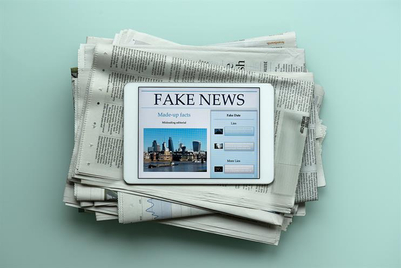
April was a dark month for China’s stock market. One of the stocks that plunged significantly over the past two weeks is Yiling Pharmaceutical, which dropped over 35% from its peak on 11 April.
A top Chinese internet influencer and the son of a Chinese billionaire, Wang Sicong, who has more than 40 million followers, reposted a video and raised the question of whether Yiling’s star product Lianhua Qingwen, had ever been recommended by the World Health Organization to treat COVID-19 patients.
The question soon went viral on Chinese social media sites amid the Shanghai lockdown. Yiling stock plunged by the daily limit, which is 10%, for two days. When the media reached out to the pharmaceutical company for comment, they did not respond immediately.
Four days after the Weibo post, Yiling Pharceutimal told Chinese media that “the company has never stated on any occasion that 'WHO recommends Lianhua Qingwen’”, challenging social media posts by individuals, non-licensed media and KOLs' posts on Weibo.
But Sina’s Weibo did not take action until the incident cause serious consequences to the pharmaceutical brand. It wasn't until several days later that Wang was banned from posting on Weibo.
Yet even if Weibo banned the KOL, social media sites do not have the power or responsibility to help prevent a brand crisis. When Campaign contacted Twitter in China for comment on misformation and brand crises, the platform declined the request.
A brand crisis like this was triggered by a KOL, and in the end, the brand was badly affected. It is still unclear whether the pharmaceutical company based in Shijiazhuang, Hebei province had shared information with the media to exaggerate the efficacy of the medicine. What is known, is that Yiling’s traditional Chinese medicine is one of the officially recommended products that has widely been used to treat COVID-19 patients with mild symptoms in China.
Guarding against misinformation
In an era of social media, individuals, unlicensed media and KOLs naturally share posts all the time, but not all of the information is verified. False or misleading information, even rumours, which is defined as misinformation not only will damage the brand image but result in billions of financial losses just in a few days.
Ashley Dudarenok, a digital marketing expert in the Chinese markets who wrote a booklet last year on how to prevent and deal with PR crisis in China, says that from a marketing perspective brands should “get verified, often communicate and engage with fans and other accounts and have a voice” before falling victim to misinformation. "Because if you only have a voice when there’s a PR crisis to handle, you’ll fail," she explains.
Dudarenok also pointed out that brands should adopt social media strategies to prepare the worst for a crisis by “developing a content guide and working with brand friends, KOCs, KOEs and others to deliver curated yet personal messages about the brand, industry and product”.
She also mentioned that by working with agencies brands could use analytics to be aware of "red zones”, or the most crucial issues to watch out for, and keep “a tightly-knit community of KOC and brand friends that can share the amplify the brand message”.
However, the digital environment in China is complex, warranting more than just monitoring social media channels and fighting rumours. Ad fraud such as invalid traffic (IVT), for instance, can also be considered misinformation that can hurt brands' ROI and reputation just as much. A Miaozhen Systems' report in March 2021 found that IVT cost the Chinese brand advertising market an estimated of 30.5 billion RMB (or 4.6 billion USD) in 2020, its highest level in the past three years.
In light of these and other misinformation risks, agency experts also brands to take a more active approach in monitoring the ecosystem and interacting with consumers directly to solidify their reputations through experience and engagement.
What brands can do to guard against social media misinformation in China
Lawrence Wan
CEO
UM China

China has the advantage of technology paired with the proliferation of the digital consumer, making it one of the most exciting environment in the world for any brands. However, an overly democratized social media environment has its risks if not managed properly. We’ve seen brands working with the wrong partners who deliver on KPIs through illegitimate means, as a result being boycotted by platforms due to their own brand integrity. Choosing the right partner(s) who are transparent, certified, and have deep platform knowledge has now become critical. Further, brands can consider centralizing or setting up a taskforce with social intelligence monitoring tools at the heart of it. The cross-functional teams of ePR, product management and advertising/media can reference the monitoring to take action proactively from multiple angles for the brands benefit.
This increases the importance of brands to build stronger direct connections amongst the various communities, moving beyond just relying on KOLs and celebrity spokespersons. This could include building up fan base for internal brand spokespersons and the brand social channels to communicate in. This can be seen in the rise of WeChat private traffic groups, brand owned AI virtual bots as KOLs, and brand direct livestreaming.
Ongoing transparent and intimate conversations with brands is always a good start. But more importantly brands should provide a macro view and strategies for the entire ecosystem, so that information is seeded without wastage and is serving a purpose within the platforms’ unique nature, identifying a role and responsibility for each under a macro view. As well, brands need to build more engagement within their social accounts and not simply focus heavily on ecommerce and promotional communications.


.jpg&h=334&w=500&q=100&v=20250320&c=1)



.png&h=334&w=500&q=100&v=20250320&c=1)
.png&h=334&w=500&q=100&v=20250320&c=1)


.png&h=334&w=500&q=100&v=20250320&c=1)





.jpg&h=268&w=401&q=100&v=20250320&c=1)
.png&h=268&w=401&q=100&v=20250320&c=1)

